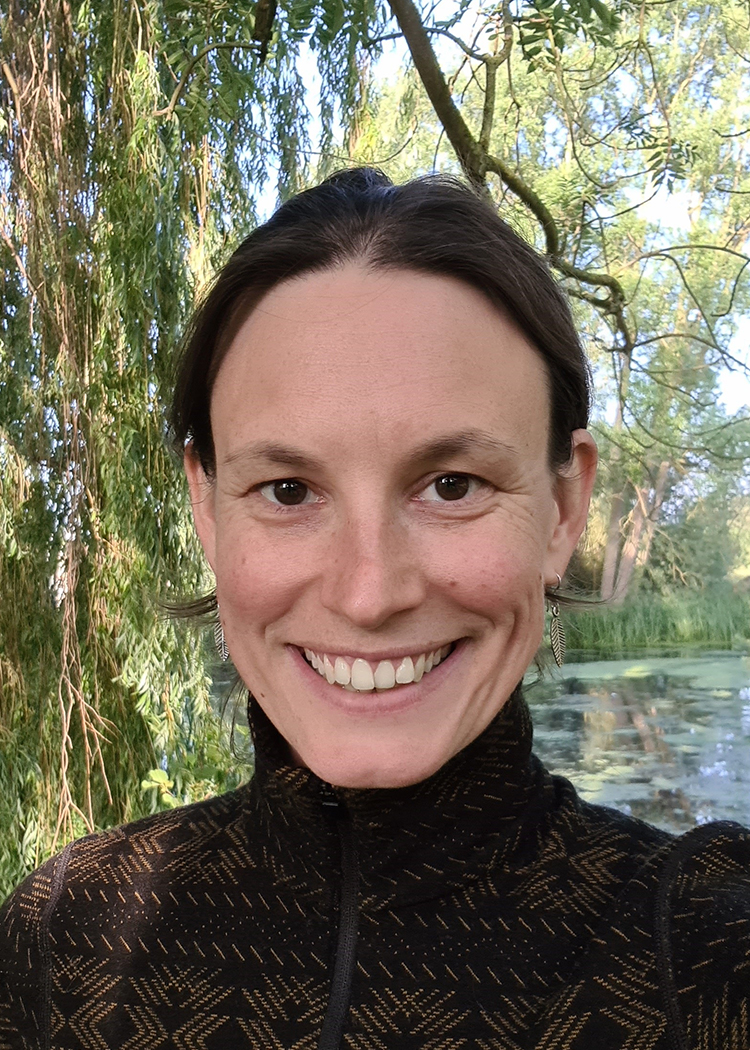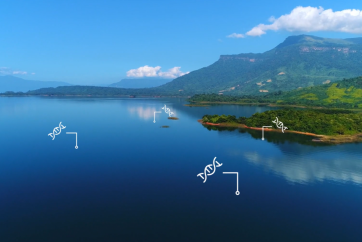I never cease to be amazed at how little we know about the very basics of which species live where – even vertebrates, which are by far the most studied group and only the tip of the biodiversity iceberg. Biodiversity surveys are extremely difficult, especially in remote areas, forests and underwater, and the resource required for comprehensive assessments at landscape scales is usually prohibitive. We have therefore become accustomed to working with incomplete, outdated and inconsistent data when trying to deliver nature conservation.
This lack of foundational data seriously hampers our ability to evaluate the impact of conservation programmes or to set meaningful targets or performance standards for businesses and governments, which are vital if we are to bend the curve on biodiversity loss.
Environmental DNA – the capture and analysis of DNA traces that species have left in water – is a game changer for biodiversity assessment. In a single water sample, you can capture the fingerprint of a whole biome from microbes to megafauna, including species that live in the water itself and those living on land nearby. What’s more, the sampling is so simple that anyone can do it – from schoolchildren to park rangers, local communities, tourists, scientists and industrial contractors.
Collecting an eDNA sample is as simple as drawing water up in a large syringe and pressing it through a small disk that contains a filter membrane. DNA is trapped on the filter, which is then sent to the laboratory for analysis. A single filter can reveal the presence of tens or hundreds of species, and sampling across a landscape can show pattern of species’ distributions and their associations with particular habitats or other species, while highlighting natural or manmade features that pose barriers to movement.
This lets biodiversity data be generated routinely and affordably at scales that would have taken decades to achieve using conventional survey methods. Even species that can’t be named due to incomplete reference databases can still be assigned to a taxonomic group (e.g. genus or family), mapped across the landscape and included in overall diversity metrics. As reference databases grow, names can be added retrospectively to existing eDNA datasets.
NatureMetrics was founded in 2016 with the aim of putting these tools in the hands of those working on the front line of environmental management and nature conservation so that they could deliver on their promise in time to help address the extinction crisis. Today, we work with organisations around the world, ranging from conservation NGOs to industry clients conducting environmental impact assessments and multi-stakeholder groups monitoring the progress of habitat restoration. Work we have already conducted has resulted in the detection of many endangered species, new country records and confirmation of species suspected to be present in a landscape but not recently observed.
The idea for the eBioAtlas programme arose from a meeting with Will Darwall (head of the IUCN Freshwater Species Programme) in which we considered how eDNA technology could have the greatest impact for species conservation globally. The answer we arrived at was to launch a coordinated global campaign to collect eDNA samples to fill in the knowledge gaps on biodiversity worldwide.
eBioAtlas aims to collect and analyse 30,000 eDNA samples within three years. Sampling will be carried out by implementing partners - primarily conservation organisations building on their active programmes and existing links to local stakeholders in each region. Samples will be exported in compliance with national and international regulations, and analysed by NatureMetrics following a standardised protocol. NatureMetrics has committed to analyse the samples on a non-profit basis, with the programme funds held and managed by IUCN.
Data will be made freely available for research and conservation, with species records added to GBIF (the Global Biodiversity Information Facility). IUCN will use the data to inform species assessments on the IUCN Red List of Threatened SpeciesTM, to help identify sites that fit the criteria for designation as Key Biodiversity Areas or other types of protection, and to target conservation resources to the places where they will have the greatest impact.
Since launching the eBioAtlas in June 2021, more than 30 multinational companies, NGOs and research institutions from all around the world have come forward to be part of the programme. Our priority now is to find a headline sponsor to enable us to deliver the programme at the envisaged scale and make the most of this unprecedented opportunity to improve conservation outcomes, unlock business investment to protect the natural world, and inform global policy to reverse the rapid decline in biodiversity.
To learn more about eBioAtlas and how you can get involved, visit www.ebioatlas.org and follow our progress @eBioAtlas on Facebook, LinkedIn, Instagram and Twitter.
About the author

Kat Bruce is the founder of NatureMetrics and one of the global leaders in applying DNA-based biomonitoring to support conservation outcomes. With a PhD in tropical ecology and DNA metabarcoding, Kat is a technical expert in these fields and sits in a range of multistakeholder platforms for DNA-based monitoring, including the UK DNA Working Group Steering Group, the steering committee of the UK Business and Biodiversity Forum and leading the EU COST Action project DNAqua-Net where she works to establish best practice for the use of aquatic DNA monitoring tools. Her particular interest lies in connecting research, industry and policy to drive forward advances in our capacity to monitor the natural world.





